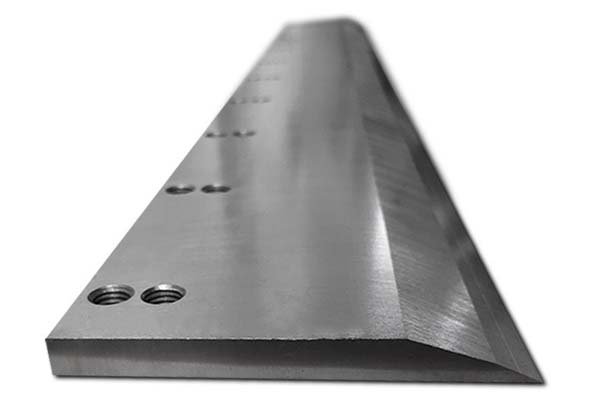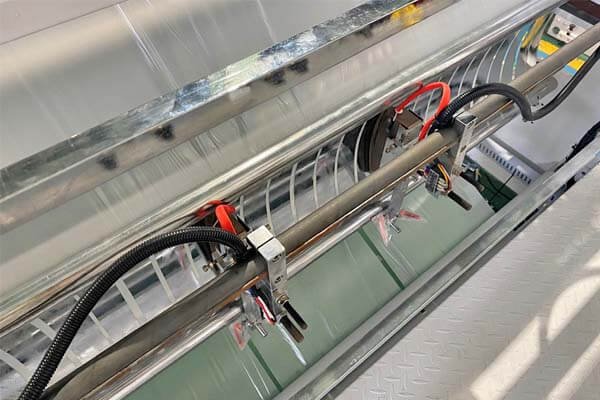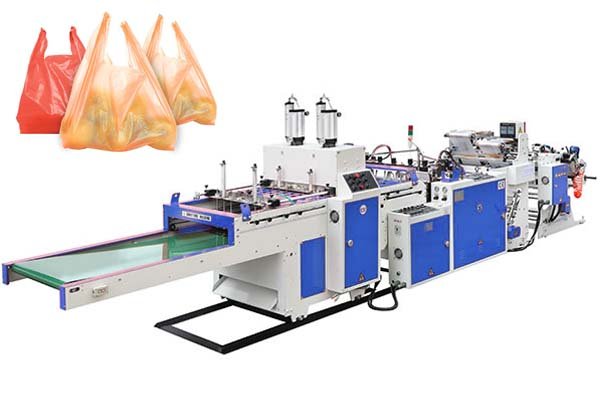
Running a bag making business means uptime is everything. A machine breakdown can halt your entire production line. This guide will show you how to manage spare parts to keep your operations running smoothly.
The most effective way to buy spare parts1 is to understand which components wear out fastest. You should then source high-quality, compatible replacements directly from the original manufacturer. This approach minimizes downtime and protects your machine's long-term health.
Proactive part management is a core part of a successful operation. It is not just about fixing problems when they happen. It is about preventing them. Knowing which parts to stock and how to choose the right ones will save you time and money. The right parts ensure your machine produces high-quality bags at optimal speed. We generally group spare parts into two main categories. The first is consumables that wear out regularly. The second is essential components that fail unexpectedly. This guide covers both.
This approach requires a bit of planning. You need to identify the critical parts for your specific machine model. For example, a T-Shirt Bag Making Machine has different high-wear parts than a Lamination Pouch Making Machine. We help our clients create a customized spare parts list based on their production volume and machine type. This ensures they have what they need on hand before a problem arises.
What Are the Most Frequently Replaced Parts? A List of Common Consumables
You know that parts need replacing. But which ones should you always have in your inventory? Knowing this helps you prepare for the most common maintenance needs and avoid long delays.
The most frequently replaced consumables are cutting blades2, heating elements, sealing bars, Teflon tapes, and drive belts. These parts are in constant contact with materials and heat, so they experience the highest levels of wear and tear during production.
A Closer Look at High-Wear Parts
Understanding why these parts need frequent replacement helps in planning your inventory. Each one plays a critical role, and its failure can stop production instantly.
Wear & Tear Parts Breakdown
- Cutting Blades: These are constantly slicing through plastic films like LDPE, HDPE, or laminated materials. Over time, the edge becomes dull. A dull blade leads to poor bag separation, jagged edges, and increased strain on the machine's cutting motor.
- Heating Elements and Bars: These parts are essential for sealing bags. They operate at high temperatures to melt and fuse plastic. Continuous heating and cooling cycles cause them to degrade and eventually fail, resulting in weak or inconsistent seals.
- Teflon Tape/Cloth: This special tape covers the sealing bars. Its non-stick surface prevents melted plastic from sticking to the hot metal. The heat and pressure wear it down, and it must be replaced regularly to ensure clean, strong seals.
- Drive Belts: These belts transfer power from the motors to moving parts, like film feeding rollers. They are under constant tension and motion, which causes them to stretch, crack, and eventually break.
Recommended Stocking Levels for Consumables
Keeping a strategic stock of these parts is crucial. You don't want to shut down your line for days while waiting for a single component to arrive. Here is a general guideline for what our clients at BagMec® typically keep on hand.
| Part Name | Primary Function | Typical Replacement Cycle | Recommended On-Site Stock |
|---|---|---|---|
| Cutting Blades | Slicing and separating bags | 1-3 months | 2-4 sets |
| Heating Elements | Generating heat for sealing | 6-12 months | 2-3 units |
| Sealing Bars | Applying heat and pressure for seals | 12-24 months | 1-2 sets |
| Teflon Tape/Cloth | Preventing plastic from sticking to seals | 2-4 weeks | 3-5 rolls |
| Drive Belts | Transferring motor power to rollers | 6-12 months | 2-4 belts |
| Silicone Rollers | Assisting film transport and pressure | 12-18 months | 1-2 units |
The Hidden Costs of Using Low-Quality Consumables
It might seem tempting to buy cheaper, third-party consumables. But this often costs more in the long run. A low-quality blade might be cheaper, but it will dull faster. This means you buy more blades over time. It can also produce low-quality bags that your customers reject, leading to material waste. Similarly, a cheap heating element might not distribute heat evenly. This creates weak spots in the bag seal, a major problem for food or medical packaging. At BagMec®, we supply parts made from high-grade materials specifically designed for our machines to guarantee performance and longevity.
How to Choose Blades, Sealing Parts, and Heating Bars for Optimal Performance
Selecting a replacement part involves more than just finding one that fits. The quality and material of the part directly impact your machine's performance, efficiency, and the final quality of your products.
To choose the best parts, you must match the component's material specifications to your production needs. Select high-carbon steel blades for durability, nickel-chromium heating bars for stable temperatures, and high-grade Teflon for clean, consistent seals.

Matching Components to Your Application
The right component choice depends entirely on what you are producing. A machine making heavy-duty garbage bags has different needs than one making thin T-shirt bags. Let's break down how to choose these key parts.
Selecting the Right Cutting Blades
The blade is where the final bag takes shape. Its performance is critical.
- Material Matters: The two most common materials are High-Speed Steel (HSS) and Tungsten Carbide. HSS is a great all-around choice for standard films like LDPE and HDPE. For abrasive, multi-layer laminated films, Tungsten Carbide blades last much longer, even though they cost more initially.
- Blade Angle and Coating: The angle of the cutting edge affects the quality of the cut. A sharper angle is good for thin films, while a more robust angle is better for thick, heavy-duty bags. Some blades also have special coatings, like Titanium Nitride (TiN), to reduce friction and extend life. We help our customers choose the right blade geometry for their specific film.
A Guide to Sealing Parts (Teflon Tape & Sealing Bars)
The seal is often the most important feature of a bag. A failed seal means a failed product.
- Sealing Bar Integrity: The sealing bar must be perfectly flat and made of a material with excellent thermal conductivity, like a specialized aluminum alloy. Any warping or damage will create uneven pressure, leading to failed seals. When you order a replacement from us, we verify it meets a flatness tolerance of ±0.05mm.
- Teflon Tape Quality: Not all Teflon tapes are the same. Look for tapes with a strong adhesive backing that can withstand high temperatures without leaving residue. The thickness of the tape also matters. A thicker tape lasts longer but may slightly slow down heat transfer.
Understanding Heating Bars
The heating bar is the heart of the sealing system. Its job is to provide consistent and stable heat.
- Wattage and Voltage: Always use a heating element with the exact wattage and voltage specified for your machine. Using the wrong one can lead to poor performance or, worse, damage the machine's electrical system.
- Even Heat Distribution: A quality heating bar, typically made with a nickel-chromium alloy, heats evenly across its entire length. Cheaper alternatives can have hot spots and cold spots. This results in some sections of the bag being perfectly sealed while others are weak or burnt. Our "Smart Tension Control" system works best when paired with our certified heating elements to ensure a perfect seal every time.
Here is a quick checklist to help you make the right choice:
Part Selection Checklist
| Component | Key Specification to Check | Why It Matters |
|---|---|---|
| Cutting Blade | Blade material (HSS, Carbide) and angle | Determines cutting quality and lifespan for your specific film type. |
| Sealing Bar | Material composition and surface flatness | Ensures even pressure and heat distribution for strong, reliable seals. |
| Heating Element | Wattage, voltage, and material (e.g., Ni-Cr) | Guarantees stable temperature control and prevents damage to electricals. |
| Teflon Tape | Temperature rating and adhesive quality | Prevents plastic sticking and ensures a clean release without equipment damage. |
How Often Should Sensors, PLCs, and Photoelectric Eyes Be Replaced?
Unlike mechanical parts, electronic components don't have predictable wear patterns. This can make it confusing to know when to replace them. You don't want to replace a working part, but you also can't afford unexpected failure.
Electronic components like sensors, PLCs, and photoelectric eyes are highly reliable and should not be replaced on a fixed schedule. Replace them only when they consistently fail or show clear signs of malfunction, like giving erratic readings or causing machine errors.
Managing Electronic Components
The philosophy for electronics is "if it is not broken, do not fix it." These parts are built for longevity. Our BagMec® machines undergo a 72-hour continuous operation stress test before shipment, which validates the durability of all electronic systems.
The "Replace on Failure" Philosophy
Modern industrial electronics are solid-state and have no moving parts to wear out. A PLC (Programmable Logic Controller), the brain of the machine, can operate for over a decade without issues. A proximity sensor or photoelectric eye can also last for years. Proactively replacing them is not cost-effective. Instead, the best strategy is to know the signs of failure so you can react quickly when a problem does occur. Keeping one spare of each critical sensor on hand is a smart, low-cost insurance policy against extended downtime.
Recognizing Signs of Failure in Electronic Parts
Your machine operators are your first line of defense. Train them to spot these common symptoms:
| Component | Symptom of Failure | Potential Impact on Production |
|---|---|---|
| Photoelectric Eye | Fails to detect print marks on the film. | Incorrect bag length, wasted printed material. |
| Proximity Sensor | Fails to detect the position of a moving part. | Machine stops with a position error, or parts collide. |
| Temperature Sensor | Provides unstable or incorrect temperature readings. | Poor quality seals (too hot or too cold), material waste. |
| PLC | Machine freezes, screen becomes unresponsive, frequent error alarms. | Complete production stoppage. |
| Servo Drive | Motor movement becomes jerky or inaccurate. | Inconsistent bag lengths, high strain on mechanical parts. |
Preventive Maintenance for Electronics
While you may not replace them often, you should still maintain them. Maintenance is simple and effective.
- Keep them Clean: Dust and oil can cover sensor lenses or photoelectric eyes, causing false readings. A regular wipe with a soft, dry cloth is often all that is needed.
- Check Connections: Vibrations from the machine can sometimes loosen electrical connections over time. During planned downtime, a quick visual inspection to ensure all cables are securely plugged in can prevent future problems.
- Maintain a Clean Environment: Keep the main electrical cabinet clean and closed. Dust buildup can cause components to overheat, shortening their lifespan.
Where to Buy Genuine Spare Parts? How to Avoid Incompatible Replacements
You have identified the part you need. Now, you must source it. Where you buy your parts is just as important as which parts you buy. Using the wrong supplier can lead to major problems.
Always buy genuine spare parts directly from the Original Equipment Manufacturer (OEM). As the OEM for BagMec® machines, we guarantee that our parts are a perfect match in quality, compatibility, and performance, eliminating any risk of incompatibility.
The OEM Advantage
Choosing between an OEM part and a cheaper third-party alternative is a critical decision. While a lower price is tempting, the risks often outweigh the savings.
OEM vs. Third-Party Parts: A Comparison
Let's look at a direct comparison. For a customer like Priya Kapoor in India who needs to keep her courier bag machine running efficiently, the choice is clear.
| Feature | OEM Parts (e.g., from BagMec®) | Third-Party Parts |
|---|---|---|
| Compatibility | Guaranteed. Designed specifically for your machine model. | Uncertain. May be a "one-size-fits-all" design that doesn't fit perfectly. |
| Quality | Consistent. Made from the same high-grade materials as the originals. | Variable. Often uses cheaper materials to cut costs, leading to faster failure. |
| Warranty | Covered. Comes with a manufacturer's warranty. | Limited or None. May even void your machine's original warranty. |
| Technical Support | Full Support. We know how the part integrates with the entire system. | Minimal. The seller likely has no deep knowledge of your machine. |
| Performance | Optimal. Restores the machine to its original performance standard. | Risky. Can cause lower efficiency, more waste, or damage to other parts. |
How to Identify a Genuine Part
When a part arrives, how can you be sure it's genuine?
- Check the Packaging: Genuine parts usually come in packaging with the OEM's branding and logo.
- Match Part Numbers: The part number on the new component should exactly match the number in your machine's manual or our quote.
- Inspect the Quality: A genuine part from BagMec® will have a high-quality finish. There will be no rough edges or signs of poor craftsmanship.
- Ask for Certification: For critical components, we can provide a certificate of authenticity to confirm it is a genuine part produced in our Wenzhou facility.
The Real Risks of Incompatible Replacements
Using an incompatible or low-quality part is a major gamble. Imagine if Carlos Mendez's aseptic diaper bag machine in Mexico used an uncertified heating element. The inconsistent sealing could compromise the sterility of the packaging, a massive risk in the medical field. Or consider Hans Fischer in Germany. His high-speed machines for food packaging must meet strict EU standards. A third-party part might not comply, putting his entire operation at risk. The true cost of a bad part is not its price, but the potential for product recalls, machine damage, and a loss of customer trust.
Conclusion
Effectively managing spare parts comes down to a simple strategy. You must know your machine's key consumables, stock them proactively, and always choose genuine OEM parts. This ensures your bag making machine operates reliably, efficiently, and produces high-quality products.






